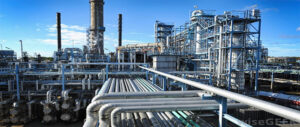
Introduction to Radiesse Cheek Injections
Radiesse cheeks injections represent one of the most sophisticated and effective non-surgical approaches to facial rejuvenation and volume restoration available in modern aesthetic medicine. This innovative treatment has revolutionized the way practitioners address age-related volume loss in the mid-face region, offering patients a minimally invasive solution that delivers natural-looking, long-lasting results.
The procedure involves the strategic placement of Radiesse dermal filler into specific areas of the cheeks to restore lost volume, enhance facial contours, and create a more youthful appearance. Unlike temporary fillers that simply add volume, Radiesse works through a unique dual-action mechanism that provides immediate volumization while stimulating the body’s natural collagen production over time.
The growing popularity of Radiesse cheek injections stems from their ability to address multiple aesthetic concerns simultaneously. Patients seeking to restore youthful cheek fullness, improve facial symmetry, or enhance their natural bone structure find this treatment particularly appealing due to its versatility and predictable outcomes.
Understanding Radiesse Composition and Mechanism
Radiesse distinguishes itself from other dermal fillers through its unique composition and innovative mechanism of action. The product consists of calcium hydroxylapatite microspheres suspended in a water-based gel carrier. These microspheres are biocompatible and bioabsorbable, meaning they integrate safely with the body’s tissues and eventually dissolve naturally over time.
The calcium hydroxylapatite component is particularly significant because it mimics the mineral composition found naturally in human bones and teeth. This biocompatibility reduces the risk of allergic reactions and makes Radiesse suitable for a wide range of patients. The microspheres measure approximately 25 to 45 microns in diameter, which is optimal for creating smooth, natural-looking results while maintaining structural integrity.
When injected into the cheek area, Radiesse provides immediate volume enhancement through the gel carrier component. However, the true innovation lies in its ability to stimulate neocollagenesis, the formation of new collagen fibers. The calcium hydroxylapatite microspheres act as a scaffold, encouraging the body’s fibroblasts to produce new collagen around the injection site. This process continues for several months after treatment, gradually replacing the temporary gel with the patient’s own natural collagen.
This dual mechanism explains why Radiesse results can last significantly longer than traditional hyaluronic acid fillers. While the initial gel component provides immediate improvement, the newly formed collagen ensures sustained volume and structural support for 12 to 18 months or even longer in some patients.
Pre-Treatment Consultation and Assessment
The success of any Radiesse cheek injection procedure begins with a thorough consultation and comprehensive facial assessment. During this critical phase, the practitioner evaluates the patient’s facial anatomy, discusses aesthetic goals, and determines whether Radiesse is the most appropriate treatment option for achieving the desired outcomes.
The consultation process typically begins with a detailed medical history review. The practitioner inquires about previous cosmetic treatments, allergies, medications, and any underlying health conditions that might affect treatment safety or outcomes. Particular attention is paid to autoimmune disorders, bleeding disorders, and current medications that might increase bruising or interfere with healing.
Facial analysis represents the cornerstone of treatment planning. The practitioner examines the patient’s facial structure from multiple angles, assessing bone structure, soft tissue distribution, and the degree of volume loss. This evaluation helps determine the optimal injection sites, the appropriate volume of product needed, and the best technique for achieving natural-looking results.
Photography plays an essential role in the pre-treatment process. High-quality before photos are taken from multiple angles under standardized lighting conditions. These images serve as a baseline for measuring treatment outcomes and help both the practitioner and patient track improvements over time.
The consultation also involves setting realistic expectations about treatment outcomes, recovery time, and potential side effects. The practitioner explains the injection process in detail, discusses post-treatment care requirements, and addresses any concerns or questions the patient might have.
Patient Preparation and Safety Protocols
Proper patient preparation is essential for ensuring optimal treatment outcomes and minimizing the risk of complications. The preparation process begins several days before the scheduled appointment and continues through the immediate pre-treatment period.
Patients receive detailed pre-treatment instructions that typically include avoiding blood-thinning medications and supplements for at least one week before treatment. Common medications and supplements to avoid include aspirin, ibuprofen, vitamin E, fish oil, and herbal supplements like ginkgo biloba and garlic. These substances can increase the risk of bruising and bleeding at injection sites.
Alcohol consumption should be minimized for 24 to 48 hours before treatment, as alcohol can also increase bleeding risk and potentially interfere with the healing process. Patients are also advised to stay well-hydrated and maintain a healthy diet in the days leading up to their appointment.
On the day of treatment, patients should arrive with clean skin, free from makeup, lotions, or other topical products. The treatment area will be thoroughly cleansed regardless, but starting with clean skin helps minimize the risk of introducing bacteria during the injection process.
The practitioner reviews the patient’s medical history once more and confirms that no new medications have been started or health changes have occurred since the initial consultation. This final safety check ensures that the patient remains a suitable candidate for treatment.
The Step-by-Step Injection Procedure
The actual Radiesse injection procedure is performed in a clinical setting under sterile conditions. The process typically takes 30 to 60 minutes, depending on the extent of treatment and the specific techniques employed.
The procedure begins with thorough cleansing of the treatment area using an antiseptic solution. This step is crucial for preventing infection and ensuring optimal treatment outcomes. The practitioner then marks the planned injection sites based on the pre-treatment assessment and treatment plan developed during the consultation.
Topical anesthetic cream may be applied to enhance patient comfort, though many practitioners prefer to use the pre-mixed Radiesse formulation that contains lidocaine. This built-in anesthetic helps minimize discomfort during the injection process and reduces the need for additional numbing agents.
The injection technique varies depending on the specific areas being treated and the practitioner’s preferred approach. Most commonly, a combination of linear threading, fanning, and bolus injection techniques are employed to achieve optimal volume distribution and natural-looking results.
For cheek enhancement, injections are typically placed at the supraperiosteal level, just above the bone but below the muscle layer. This placement provides structural support while maintaining natural facial movement and expression. The practitioner uses their non-dominant hand to stabilize the skin and guide the needle while the dominant hand controls the injection.
Throughout the procedure, the practitioner continuously assesses symmetry and volume distribution, making adjustments as needed to ensure balanced, natural-looking results. The injection process is performed slowly and methodically, allowing time for proper product placement and minimizing patient discomfort.
Injection Techniques and Anatomical Considerations
The success of Radiesse cheek injections depends heavily on the practitioner’s understanding of facial anatomy and mastery of various injection techniques. The face contains numerous vital structures, including blood vessels, nerves, and muscles, that must be carefully avoided during treatment.
The primary injection technique for cheek enhancement involves targeting the malar and submalar regions. The malar area, located over the cheekbone, is ideal for creating volume and projection, while the submalar region, just below the cheekbone, helps restore the natural S-curve of the cheek and can address nasolabial fold formation.
Linear threading technique involves inserting the needle to the desired depth and injecting product while slowly withdrawing the needle. This creates a linear depot of filler that provides structural support and volume along the injection path. This technique is particularly effective for addressing volume loss in the mid-face region.
The fanning technique involves inserting the needle to a central point and then redirecting it in multiple directions without completely withdrawing it from the skin. Product is injected along each path, creating a fan-like distribution pattern. This technique is useful for covering larger areas and achieving smooth, even volume distribution.
Bolus injection involves depositing a specific amount of product at a predetermined location without moving the needle. This technique is often used for creating specific contour points or addressing localized volume deficits.
The practitioner must also consider the patient’s unique facial anatomy when selecting injection techniques. Factors such as skin thickness, muscle activity, bone structure, and existing tissue volume all influence the optimal approach for each individual patient.
Managing Patient Comfort During Treatment
Patient comfort is a primary consideration throughout the Radiesse injection procedure. While the treatment is generally well-tolerated, practitioners employ various strategies to minimize discomfort and ensure a positive treatment experience.
The use of topical anesthetic agents represents the first line of comfort management. High-quality topical anesthetics containing lidocaine, benzocaine, or tetracaine can significantly reduce injection site sensitivity when applied 20 to 30 minutes before treatment. The anesthetic is typically removed just before injection to ensure optimal product placement.
Many Radiesse formulations now include lidocaine mixed directly into the product. This built-in anesthetic provides comfort during and immediately after injection, reducing the need for additional numbing agents. The lidocaine also helps minimize post-treatment discomfort as the anesthetic effect gradually wears off.
Injection technique plays a crucial role in patient comfort. Experienced practitioners use fine-gauge needles or cannulas, which create smaller entry points and reduce tissue trauma. The injection speed is carefully controlled to minimize pressure-related discomfort, and the practitioner frequently pauses to allow tissues to accommodate the injected volume.
Distraction techniques and relaxation strategies can also enhance patient comfort. Some practitioners use vibration devices, cold application, or engage patients in conversation to help redirect attention away from the injection process. Creating a calm, professional environment with soothing music and comfortable positioning further contributes to a positive treatment experience.
Immediate Post-Injection Care and Monitoring
The immediate post-injection period is critical for ensuring optimal treatment outcomes and identifying any potential complications early. Patients are monitored in the clinical setting for at least 15 to 30 minutes after treatment completion to assess for immediate adverse reactions.
During this monitoring period, the practitioner evaluates injection sites for appropriate product placement, symmetry, and early signs of complications such as excessive swelling, blanching, or vascular compromise. Any necessary adjustments can be made during this immediate post-treatment window.
Ice application is commonly recommended to minimize swelling and bruising. Cold compresses should be applied gently to avoid displacing the newly injected product. The ice should be wrapped in a clean cloth and applied for 10 to 15 minutes at a time with breaks between applications.
Patients receive detailed post-treatment instructions before leaving the clinical setting. These instructions typically include guidelines for activity restrictions, skincare modifications, and signs that warrant immediate medical attention. The practitioner ensures that patients understand these instructions and have contact information for any post-treatment concerns.
Documentation of the treatment, including product lot numbers, injection sites, volumes used, and immediate post-treatment appearance, is completed during this period. This information is essential for tracking treatment outcomes and planning future sessions.
Expected Results and Timeline
Understanding the expected timeline and progression of results helps patients have realistic expectations and appreciate the full benefits of their Radiesse treatment. The results of cheek injections develop in phases, each contributing to the overall aesthetic improvement.
Immediate results are visible as soon as the injection process is completed. Patients can see increased cheek volume and improved facial contours, though some initial swelling may mask the final outcome. These immediate results are primarily due to the gel carrier component of Radiesse, which provides instant volume enhancement.
The first few days after treatment typically involve some degree of swelling and potentially minor bruising. During this period, the injected product begins to integrate with surrounding tissues, and any initial irregularities or asymmetries often resolve naturally as swelling subsides.
By the end of the first week, most acute side effects have resolved, and patients can appreciate the more natural-looking results. The product has settled into its final position, and facial expressions appear more natural as tissues adapt to the added volume.
The true magic of Radiesse becomes apparent over the following months as neocollagenesis begins. The calcium hydroxylapatite microspheres stimulate fibroblast activity, leading to increased collagen production around the injection sites. This process gradually replaces the temporary gel component with the patient’s own natural collagen.
Peak results are typically achieved around three to six months after treatment, when the collagen stimulation process is most active. During this period, patients often notice continued improvement in skin quality, firmness, and overall facial volume even as the original gel component begins to metabolize.
Recovery Process and Aftercare Instructions
The recovery process following Radiesse cheek injections is generally straightforward, but proper aftercare is essential for optimizing results and minimizing complications. Patients can typically return to normal activities within 24 to 48 hours, though some restrictions apply during the initial healing period.
Activity restrictions during the first 24 to 48 hours help prevent product displacement and minimize swelling. Patients should avoid strenuous exercise, excessive facial manipulation, and sleeping face-down. Gentle daily activities and work responsibilities can usually be resumed immediately, though some patients prefer to schedule treatment before a weekend to allow for privacy during the initial healing phase.
Skincare modifications are important during the recovery period. Patients should avoid harsh cleansers, exfoliating products, and active ingredients like retinoids or alpha hydroxy acids for at least one week after treatment. Gentle cleansing with mild products and careful patting dry help protect the injection sites while maintaining proper hygiene.
Sun protection becomes even more critical after treatment, as the skin may be more sensitive to UV damage. Patients should use broad-spectrum sunscreen with at least SPF 30 and consider wearing protective clothing or hats when outdoors. Some practitioners recommend avoiding prolonged sun exposure for the first week after treatment.
Massage restrictions are particularly important with Radiesse injections. Unlike some other fillers, Radiesse should not be massaged unless specifically directed by the practitioner. Unnecessary manipulation can displace the product and affect final results. Patients should avoid facial treatments, including professional massages, for at least two weeks after injection.
Sleep position recommendations help prevent product displacement during the critical first few nights. Patients should sleep with their head elevated and avoid sleeping on their side or stomach. Using an extra pillow or sleeping in a recliner can help maintain proper positioning during sleep.
Potential Side Effects and Risk Management
While Radiesse cheek injections are generally safe when performed by qualified practitioners, patients should be aware of potential side effects and risk factors. Understanding these possibilities helps patients make informed decisions and recognize when medical attention may be needed.
Common side effects include temporary swelling, bruising, redness, and tenderness at injection sites. These reactions are normal parts of the healing process and typically resolve within a few days to a week. The severity and duration of these effects vary among individuals and can be influenced by factors such as skin sensitivity, injection technique, and post-treatment care.
Swelling is often the most noticeable immediate side effect, particularly in the delicate under-eye area if treatment extends to this region. The swelling is usually mild to moderate and peaks within 24 to 48 hours after treatment. Cold compresses and head elevation help minimize swelling and promote faster resolution.
Bruising occurs in a percentage of patients and is more likely in individuals taking blood-thinning medications or supplements. While bruising can be cosmetically concerning, it poses no health risk and typically fades within one to two weeks. Concealing makeup can be used once the injection sites have healed, usually after 24 hours.
More serious complications, while rare, can occur and require immediate medical attention. Vascular compromise, resulting from inadvertent injection into blood vessels, can cause tissue necrosis if not promptly recognized and treated. This emphasizes the importance of choosing experienced practitioners who understand facial anatomy and proper injection techniques.
Infection at injection sites is another potential complication that requires immediate treatment with antibiotics. Signs of infection include increasing pain, warmth, redness, and purulent discharge. Patients should contact their practitioner immediately if these symptoms develop.
Long-term Maintenance and Follow-up Care
The longevity of Radiesse results makes it an attractive option for patients seeking long-lasting facial rejuvenation. However, understanding the maintenance requirements and follow-up care helps ensure sustained satisfaction with treatment outcomes.
Follow-up appointments are typically scheduled at specific intervals to monitor healing, assess results, and plan future treatments. The first follow-up usually occurs within one to two weeks after treatment to evaluate initial healing and address any concerns. Additional appointments may be scheduled at three months, six months, and one year to track long-term results.
During follow-up visits, the practitioner assesses volume retention, symmetry, and patient satisfaction. Photography under standardized conditions allows for objective comparison with pre-treatment images and helps track the progression of results over time.
Maintenance treatments are typically needed every 12 to 18 months to sustain optimal results. However, the interval between treatments may vary based on individual factors such as metabolism, lifestyle, and aesthetic goals. Some patients find that subsequent treatments require less product volume as the cumulative collagen stimulation effect builds over time.
The practitioner may recommend complementary treatments to enhance and maintain results. These might include skincare regimens with medical-grade products, other non-surgical procedures like radiofrequency treatments, or combination approaches that address multiple aspects of facial aging.
Patient education about factors that can affect treatment longevity is an important component of long-term care. Sun protection, proper skincare, healthy lifestyle choices, and avoiding habits that accelerate aging all contribute to prolonging treatment benefits.
Comparing Radiesse to Other Dermal Fillers
Understanding how Radiesse compares to other dermal filler options helps patients make informed treatment decisions. Each type of filler has unique characteristics that make it more suitable for specific applications and patient needs.
Hyaluronic acid fillers represent the most common alternative to Radiesse for cheek enhancement. These products provide immediate volume but typically last 9 to 12 months, shorter than Radiesse. However, hyaluronic acid fillers can be dissolved with hyaluronidase if adjustment is needed, offering a safety advantage for some patients.
The consistency and integration characteristics of Radiesse make it particularly well-suited for deep volume restoration and structural support. Its ability to stimulate collagen production provides additional benefits beyond simple volume replacement, making it ideal for patients with significant volume loss or those seeking long-lasting results.
Cost considerations often factor into the decision between different filler types. While Radiesse may have a higher upfront cost per syringe, its longer duration often makes it more cost-effective over time compared to fillers requiring more frequent touch-ups.
Patient lifestyle and preferences also influence filler selection. Those who prefer less frequent treatments may find Radiesse more appealing, while patients who like the flexibility of more frequent adjustments might prefer shorter-lasting alternatives.
Cost Considerations and Treatment Planning
The financial investment in Radiesse cheek injections varies based on multiple factors, and understanding these variables helps patients plan appropriately for treatment. Cost considerations extend beyond the immediate treatment expense to include long-term maintenance and potential additional procedures.
Treatment costs are influenced by geographic location, practitioner experience and qualifications, facility overhead, and the amount of product required. Urban areas and highly experienced practitioners typically command higher fees, reflecting the value of expertise and convenience.
The number of syringes needed varies based on the degree of volume loss, desired outcome, and individual facial anatomy. Most cheek enhancement procedures require one to three syringes, though some patients may need additional product for optimal results.
Insurance coverage is not available for cosmetic procedures, making Radiesse injections an out-of-pocket expense. However, many practices offer financing options or payment plans to make treatment more accessible to qualified patients.
When calculating the total cost of treatment, patients should consider the longer duration of Radiesse compared to other fillers. While the initial investment may be higher, the extended time between treatments often results in lower annual costs compared to shorter-lasting alternatives.
Planning for maintenance treatments helps patients budget appropriately for long-term facial rejuvenation goals. Most patients benefit from annual touch-up treatments, though individual needs may vary based on personal factors and aesthetic preferences.
Conclusion and Final Recommendations
Radiesse cheek injection procedures represent a sophisticated approach to facial rejuvenation that combines immediate volume enhancement with long-term collagen stimulation. The success of these treatments depends on careful patient selection, thorough pre-treatment planning, expert injection technique, and comprehensive post-treatment care.
The unique dual-action mechanism of Radiesse sets it apart from other dermal fillers, offering patients longer-lasting results and continued improvement over time. This makes it an excellent choice for individuals seeking significant volume restoration with minimal treatment frequency.
Choosing a qualified, experienced practitioner is perhaps the most critical factor in achieving optimal results. The complexity of facial anatomy and the permanent nature of complications make expertise and proper training essential for safe, effective treatment.
Patients considering Radiesse cheek injections should have realistic expectations about treatment outcomes, recovery time, and maintenance requirements. While the procedure offers excellent results for appropriate candidates, it is not suitable for everyone, and alternative treatments may be more appropriate in some cases.
The investment in professional Radiesse treatment, when performed by qualified practitioners, can provide significant aesthetic improvement and enhanced self-confidence. The combination of immediate results and long-term benefits makes this an attractive option for patients committed to maintaining their facial rejuvenation goals.
Future developments in injection techniques, product formulations, and combination therapies will likely continue to improve the safety and effectiveness of Radiesse treatments. Staying informed about these advances helps both practitioners and patients make the best decisions for achieving desired aesthetic outcomes.
The field of non-surgical facial rejuvenation continues to evolve, with Radiesse cheek injections representing one of the most established and reliable options available. For patients seeking natural-looking volume restoration with lasting results, this treatment offers an excellent balance of safety, effectiveness, and convenience that has made it a cornerstone of modern aesthetic practice.







